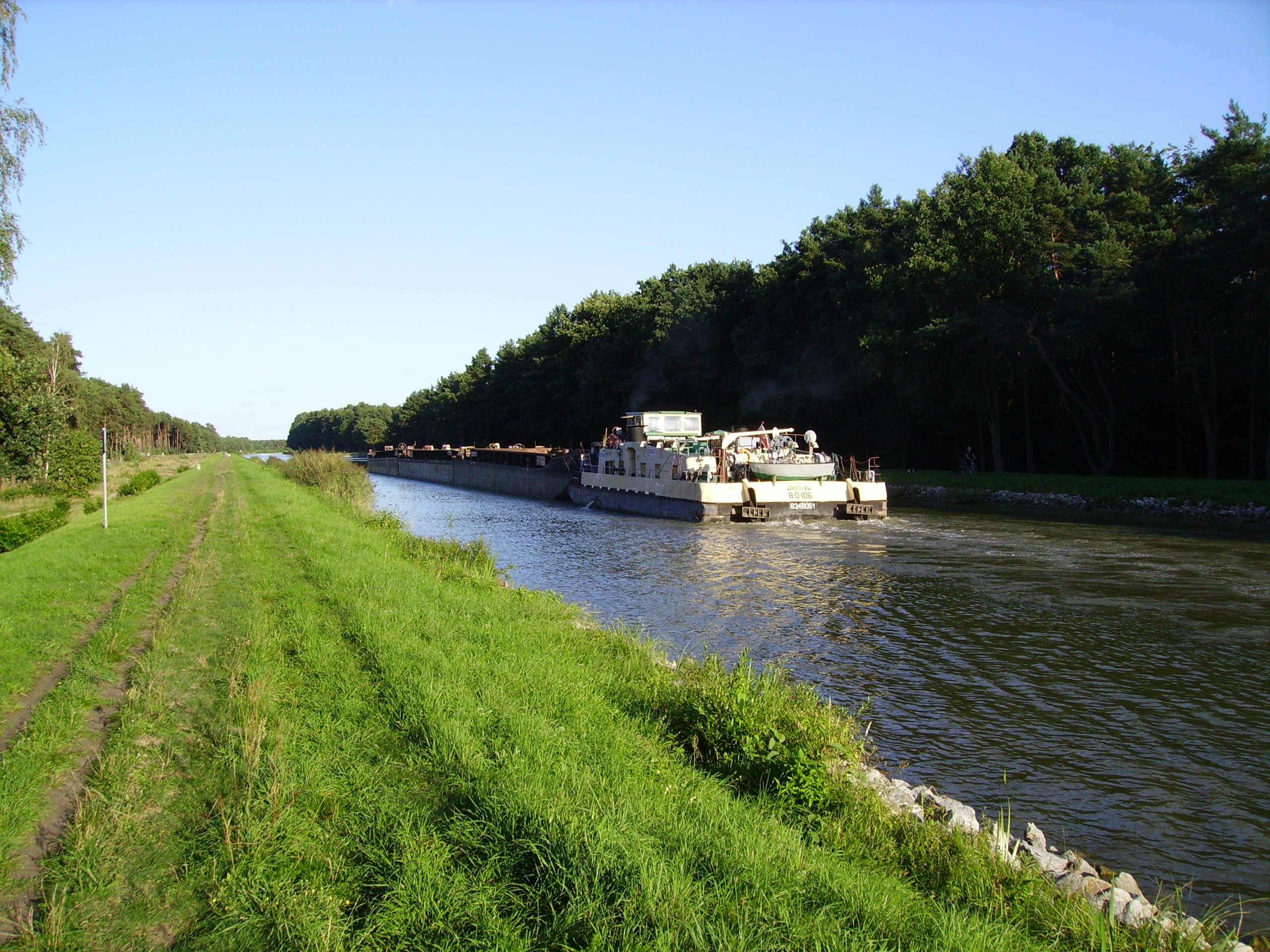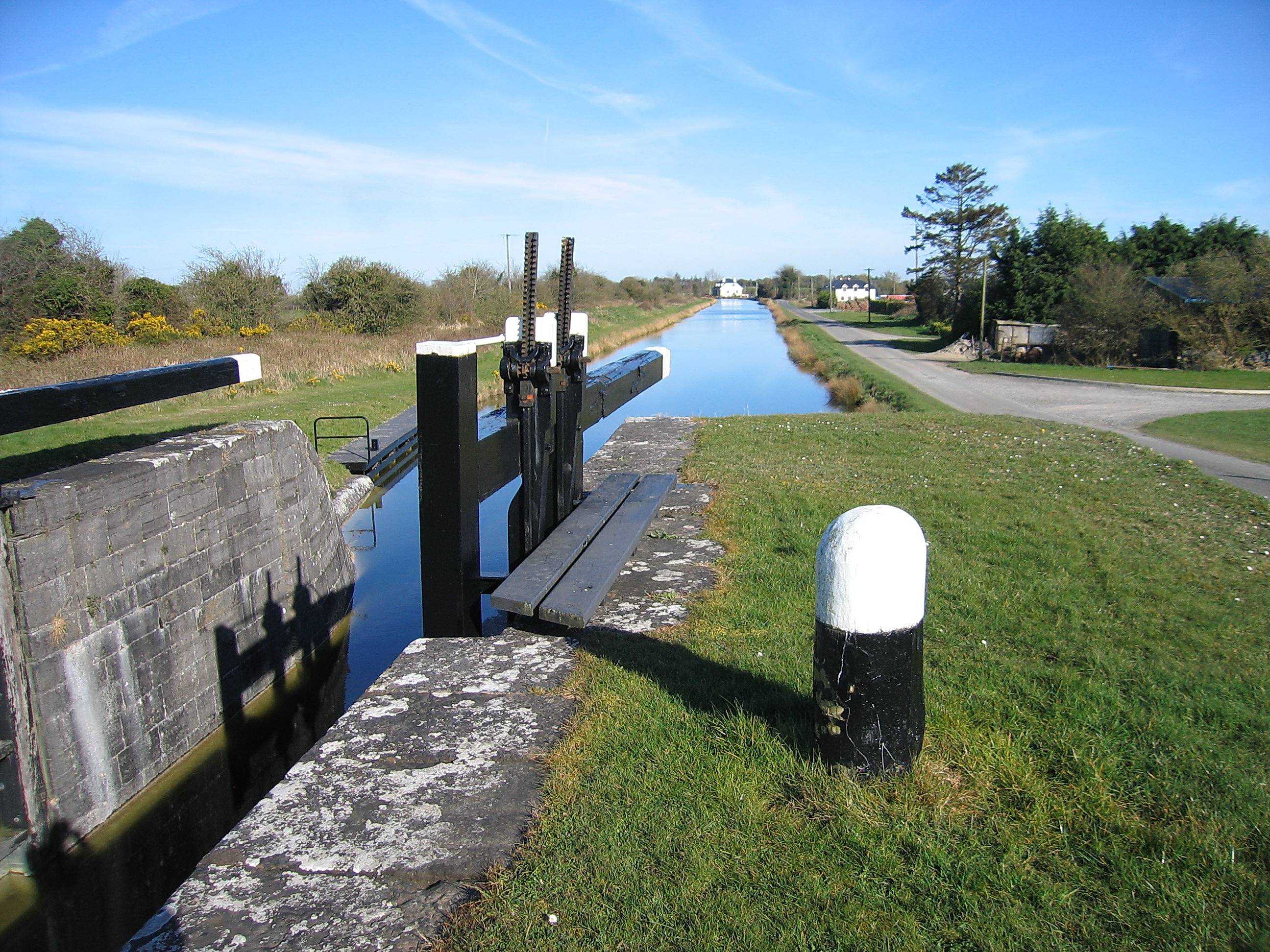|
Oder–Havel Canal
The Oder–Havel Canal is a German canal built between 1908 and 1914, originally known as the Hohenzollern Canal, mostly replacing the Finow Canal. Together with Hohensaaten-Friedrichsthaler Wasserstraße, the ''Oderhaltung'' and the ''Schwedter Querfahrt'' it forms the ''Havel-Oder-Wasserstraße''. It runs from the town of Cedynia near the city of Szczecin on the Oder River between Germany and Poland to the Havel, a tributary of the Elbe, near Berlin. It is long, and wide. In 1934 a ship lift was built on the canal, near Niederfinow. It vertical lift was . The dimensions of the caisson are 85 x 12 x 2.5 m. It could lift vessels of up to 1000 tonnes displacement. History The assumed start of the actual Oder–Havel Canal is the current mouth of the Oranienburger Havel. It leads through the Lehnitzsee, which previously did not belong to the Havel, and reaches the Lehnitzschleuse. Most of the canal follows the former Malz Canal and then replaces the older Finow Canal up ... [...More Info...] [...Related Items...] OR: [Wikipedia] [Google] [Baidu] |
Oder River
The Oder ( , ; Czech, Lower Sorbian and ; ) is a river in Central Europe. It is Poland's second-longest river in total length and third-longest within its borders after the Vistula and Warta. The Oder rises in the Czech Republic and flows through western Poland, later forming of the border between Poland and Germany as part of the Oder–Neisse line. The river ultimately flows into the Szczecin Lagoon north of Szczecin and then into three branches (the Dziwna, Świna and Peene) that empty into the Bay of Pomerania of the Baltic Sea. Names The Oder is known by several names in different languages, but the modern ones are very similar: English and ; Czech, Polish, and , ; (); Medieval Latin: ''Od(d)era''; Renaissance Latin: ''Viadrus'' (invented in 1534). Ptolemy knew the modern Oder as the Συήβος (''Suebos''; Latin ''Suevus''), a name apparently derived from the Suebi, a Germanic people. While he also refers to an outlet in the area as the Οὐιαδ ... [...More Info...] [...Related Items...] OR: [Wikipedia] [Google] [Baidu] |
Canals Opened In 1914
Canals or artificial waterways are waterways or engineered channels built for drainage management (e.g. flood control and irrigation) or for conveyancing water transport vehicles (e.g. water taxi). They carry free, calm surface flow under atmospheric pressure, and can be thought of as artificial rivers. In most cases, a canal has a series of dams and locks that create reservoirs of low speed current flow. These reservoirs are referred to as ''slack water levels'', often just called ''levels''. A canal can be called a ''navigation canal'' when it parallels a natural river and shares part of the latter's discharges and drainage basin, and leverages its resources by building dams and locks to increase and lengthen its stretches of slack water levels while staying in its valley. A canal can cut across a drainage divide atop a ridge, generally requiring an external water source above the highest elevation. The best-known example of such a canal is the Panama Canal. Many c ... [...More Info...] [...Related Items...] OR: [Wikipedia] [Google] [Baidu] |
Federal Waterways In Germany
Federal or foederal (archaic) may refer to: Politics General *Federal monarchy, a federation of monarchies *Federation, or ''Federal state'' (federal system), a type of government characterized by both a central (federal) government and states or regional governments that are partially self-governing; a union of states *Federal republic, a federation which is a republic *Federalism, a political philosophy *Federalist, a political belief or member of a political grouping * Federalization, implementation of federalism Particular governments *Federal government of the United States **United States federal law **United States federal courts *Government of Argentina * Government of Australia *Government of Pakistan *Federal government of Brazil *Government of Canada *Government of India *Federal government of Mexico * Federal government of Nigeria * Government of Russia *Government of South Africa * Government of Philippines Other *''The Federalist Papers'', critical early arguments i ... [...More Info...] [...Related Items...] OR: [Wikipedia] [Google] [Baidu] |
Canals In Brandenburg
Canals or artificial waterways are waterways or engineered channels built for drainage management (e.g. flood control and irrigation) or for conveyancing water transport vehicles (e.g. water taxi). They carry free, calm surface flow under atmospheric pressure, and can be thought of as artificial rivers. In most cases, a canal has a series of dams and locks that create reservoirs of low speed current flow. These reservoirs are referred to as ''slack water levels'', often just called ''levels''. A canal can be called a ''navigation canal'' when it parallels a natural river and shares part of the latter's discharges and drainage basin, and leverages its resources by building dams and locks to increase and lengthen its stretches of slack water levels while staying in its valley. A canal can cut across a drainage divide atop a ridge, generally requiring an external water source above the highest elevation. The best-known example of such a canal is the Panama Canal. Many c ... [...More Info...] [...Related Items...] OR: [Wikipedia] [Google] [Baidu] |
Elde
The Elde () is a river in northern Germany (Mecklenburg-Vorpommern and a few km in Brandenburg), a right tributary of the Elbe. Its total length is . The Elde originates near Altenhof, south of Malchow. It first flows southeast towards the southern end of Lake Müritz, which it enters at Vipperow. It flows out of the Müritz at its northern end, near Waren. It turns west, and flows through a series of small lakes, and along the town of Malchow, until the Plauer See. It flows out of the Plauer See at Plau am See, and continues west and southwest through Lübz, Parchim, Neustadt-Glewe, Grabow and Eldena, and flows into the Elbe at Dömitz. Near Eldena, the ''Alte Elde'' branches off and flows into the Löcknitz (another tributary of the Elbe The Elbe (; cs, Labe ; nds, Ilv or ''Elv''; Upper and dsb, Łobjo) is one of the major rivers of Central Europe. It rises in the Giant Mountains of the northern Czech Republic before traversing much of Bohemia (western half of the C ... [...More Info...] [...Related Items...] OR: [Wikipedia] [Google] [Baidu] |
Malz Canal
Malz is a German and Jewish surname. Notable people by that name include: * Stefan Malz (born 1972), retired German footballer. * Jakob Malz Jakob Malz (17 September 1902 – 1982) was a Galicia (Eastern Europe), Galician-born German-Jewish amateur boxing champion. He emigrated to Britain before the Second World War to escape the Nazis and served in the Royal Pioneer Corps of the Brit ... (1902–1982), German-Jewish amateur boxing champion. See also * Maltz (other) {{surname German culture Jewish culture ... [...More Info...] [...Related Items...] OR: [Wikipedia] [Google] [Baidu] |
PIANC
The World Association for Waterborne Transport Infrastructure (PIANC) is an international professional organisation founded in 1885. PIANC’s mission today is to provide expert guidance and technical advice on technical, economic and environmental issues pertaining to waterborne transport infrastructure, including the fields of navigable bodies of water ( waterways), such as canals and rivers, as well as ports and marinas. It is headquartered in Brussels in offices provided by the Flemish government of Belgium. Its earlier names were the (''AIPCN'') until 1921, then as the Permanent International Association of Navigation Congresses (PIANC). It is additionally known as the International Navigation Association (french: Association Internationale de Navigation). History On 25 May 1885, the first Inland Navigation Congress was held in Brussels, providing a forum for an international debate on these questions. After some years, the Inland Navigation Congress merged with the ... [...More Info...] [...Related Items...] OR: [Wikipedia] [Google] [Baidu] |
Ship Lift
A shiplift is a modern alternative for a slipway, a floating dry dock or a graving dry dock. A shiplift is used to dry dock and launch ships. It consists of a structural platform that is lifted and lowered exactly vertically, synchronously by a number of hoists. First, the platform is lowered underwater, then the ship is floated above the support, and finally the platform with support and ship is lifted and the ship is brought to the level of the quay. Design Nowadays, shiplift are most of the time supplied under rules of a classification authority. Lloyd's Register of Shipping is the authority with most experience in the certification or classification of shiplifts. Whereas "shiplift" is the word that is normally used, the term used by Lloyd's register is "Mechanical Lift Dock". There are two different kinds of platform design, the articulated and the rigid. The articulated platform has hinged connections between the main and the longitudinal beams. A rigid platform, the bea ... [...More Info...] [...Related Items...] OR: [Wikipedia] [Google] [Baidu] |




